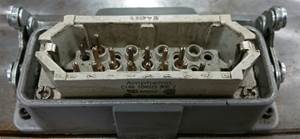Aluminum Tooling Proves Its Mettle
Can aluminum tooling enter the race for high-volume automotive injection molding?
Can aluminum tooling enter the race for high-volume automotive injection molding? It depends on the material and part and the secondary operations being performed. Automakers can save 5% to 10% on tools for the majority of their applications, and the added benefit is at least 10% shorter lead times versus steel tools. Molding cycle-time reductions of 20% to 40% or more are readily achievable, given aluminum's higher thermal conductivity. It is being used today on some high-volume applications at Honda of America Manufacturing, Inc., in runs that have reached hundreds of thousands of parts.
Just over five years ago, Unique Tool & Gauge approached Honda with an opportunity to help reduce tooling and production costs while maintaining part quality. Aluminum grades in the past did not have the wear properties or hardness of P20 tool steel. Newer, harder aluminum alloys made aluminum tooling worth a second look.
TEST DRIVING ALUMINUM
One success story for aluminum tooling was for a polypropylene rear tray for the Honda Accord. Unique built a "hybrid" tool with core and cavity blocks of QC-10 aluminum and a steel mold base and ejector. Honda also ordered an all-steel backup tool. Molder Nissen Chemitec America (NCA), of London, Ohio, has produced more than 350,000 parts in the aluminum tool since 2007.
NCA ran comparison tests in the steel backup mold and found that the aluminum tool gave cycle-time savings of about 20%. Shawn Hendrix, sr. v.p. of NCA, notes that "just having a tool that can run faster isn't the entire story." NCA molds the rear tray in a production cell that installs a rear brake lamp, speakers, wire harnesses, and more. "In this case, we could actually run faster but we would then have to add additional manpower over each of our three shifts."
"We're fans of aluminum tooling, says Damion Manns, new model manager at NCA, "but molders need to look carefully at the amount of value-added they're putting in at the molding location. If they're molding a part and then moving it somewhere else in the plant or shipping it out, they can take full advantage of faster cycles."
At Unique Tool, we had to develop new ways of designing tools in aluminum, and we've worked closely with molders to determine operating guidelines for aluminum molds. With a P20 steel tool, if stress marks appeared on the part you would try to cool the tool more or make the cycle longer to let the part set up more. With aluminum you would do the opposite, because the plastic cools and shrinks so quickly. Molders generally inject aluminum tools faster but with reduced pressures, which is easier on the tool.
NCA's maintenance experience with aluminum tooling has been similar to that with P20 steel, except that textured parts need somewhat more frequent cleaning of the "A" surface. Adds Manns, "One of the biggest differences in handling and repair for us is the special skills needed to weld aluminum. We can do small weld repairs on P20 steel tools in-house, but for QC-10 aluminum we have to send that out. This has been a real learning experience. And we're still learning."
Richard Spears, manager of the Tooling Engineering Group at Honda North American Purchasing, agrees: "We've learned a lot about aluminum's durability relative to the amount of action in the tool, as well as how the material and the tool perform. We do see competitive advantages with aluminum tooling. We're not saying that everything's perfected by any means. We're going to continue to make measured investments, assess our risks and move forward. Thus far, we would judge our involvement in aluminum tooling a success."
Unique Tool has built quite a few aluminum tools for other Honda parts. Every year their demand for aluminum tools increases. We see huge growth coming for aluminum and have had calls from other automakers.
Aluminum tooling isn't for every application. Tools for relatively flat parts that need few man-hours will show lower savings and possibly even a higher price, since aluminum costs more than steel. But tools with more depth and mechanical actions, which require more machining, spotting, drilling, and benching, will save in aluminum.
Related Content
How to Reduce Sinks in Injection Molding
Modifications to the common core pin can be a simple solution, but don’t expect all resins to behave the same. Gas assist is also worth a try.
Read MoreHot Runners: How to Maintain Heaters, Thermocouples, and Controls
I conclude this three-part examination of real-world problems and solutions involving hot runners by focusing on heaters, thermocouples, and controls. Part 3 of 3.
Read MoreOptimizing Pack & Hold Times for Hot-Runner & Valve-Gated Molds
Using scientific procedures will help you put an end to all that time-consuming trial and error. Part 1 of 2.
Read MoreWhat to Look for in High-Speed Automation for Pipette Production
Automation is a must-have for molders of pipettes. Make sure your supplier provides assurances of throughput and output, manpower utilization, floor space consumption and payback period.
Read MoreRead Next
People 4.0 – How to Get Buy-In from Your Staff for Industry 4.0 Systems
Implementing a production monitoring system as the foundation of a ‘smart factory’ is about integrating people with new technology as much as it is about integrating machines and computers. Here are tips from a company that has gone through the process.
Read MoreSee Recyclers Close the Loop on Trade Show Production Scrap at NPE2024
A collaboration between show organizer PLASTICS, recycler CPR and size reduction experts WEIMA and Conair recovered and recycled all production scrap at NPE2024.
Read MoreBeyond Prototypes: 8 Ways the Plastics Industry Is Using 3D Printing
Plastics processors are finding applications for 3D printing around the plant and across the supply chain. Here are 8 examples to look for at NPE2024.
Read More














